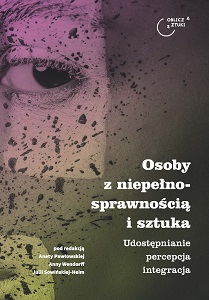
We kindly inform you that, as long as the subject affiliation of our 300.000+ articles is in progress, you might get unsufficient or no results on your third level or second level search. In this case, please broaden your search criteria.


The article deals with an issue of audio description (AD), verbal description of visual content, transmitted with the use of the auditory system to visually impaired people. The analysis covers audio description of works of art. The paper presents the origins of AD of fine arts in Poland and across the world. It describes types of audio description in museums and principles of its creation. Another discussed issue of borrowing visual sensations through haptic, kinesthetic or olfactory senses that accompany AD. The reader may find examples of audio description from Łódź museums: the Museum of Art in Łódź (ms1, ms2, Herbst Palace Museum) and the Museum of the City of Łódź.
More...
Social integration and activation of people with visual impairment is one of the most important challenges in modern democratic countries. Due to the rise of awareness, there has been an increase in number of projects undertaken by cultural institutions to enable visually impaired consumers receive culture in a broad sense. The process is vital because, culture has become more and more visually oriented. Audio description (a way of translating visual to auditory) is one of the best ways to enable blind people to receive sport and theatrical events but also exhibitions and works of art. The main problem discussed among specialists in the field right now is the question of objectivity, that should be the main rule to follow, while creating a description and what how it should be used. Another vital issue is the participation of people with visual impairment in the cyber environment and exploring the ways in which state of the art technology can help the efforts of audiodescribers, museums and art galleries in matters of enabling. For several years prof. Aneta Pawłowska from the Department of Art History at University of Łódź, has conducted a research project which main aim is to provide audio descriptions for a number of museums in Łódź. The main aim of constant drive for improvement, interdisciplinary character of the works and the cooperation with Department of Spanish and Faculty of Physics and Applied Informatics is to research audio description as a method of enabling, teach it’s basics to the students and create descriptions for cultural institutions in Łódź.
More...
The article points out some dangers that stem from the comparison of audio description (AD) to ekphrasis. The comparison has been proposed by Robert Więckowski and since then used in the Polish literature concerning the topic. Emphasized are the differences in the reception of the two literary forms: ekphrasis encourages mental visualisation based on the recipient’s own experience, while AD is to evoke aesthetic experience also among people whose imagination is devoted of visual qualities. The two forms of description have other goals as well: ekhprasis aspires to become an autonomous literary work, whereas AD is only a tool directing to the art piece. The reflections proposed are initiated in the practical experience of a text-writer, but come back to the general problems concerned with the goal of AD and its relation to the work of art.
More...
The key issue of this article centers on the proposal of the translation of audio description of works of art as a method of creating a new script of the work of art. The inclusion of audio description in the scope of Translation Studies and, in particular, within intersemiotic translation in line with the triadic division of Jacobson, gives the possibility of using translating strategies to transfer culture-specific elements denominated here as cultureme. The aim being to explain to the recipients occurrences that are foreign to them. Our starting point in this analysis are the audio description extracts of work of art of cultural values which a featured in the virtual guide of the Museum of Julio Romero de Cordoba. The translated audio description fragments contain specific culturemes, which can evoke doubts or incomprehension in the Polish recipient of the translated script. Key words:.
More...
Hearing persons have a free touch with World of the Culture and Art. The article deals with the problems of Deaf and hard of hearing persons, who through the partial or complete lack of the hearing have a limited access to culture (theatre, exhibitions with the guide, museums, libraries, etc.)? It results in lack of interest with involvement in the culture, even if the cultural offer is interesting and rich. However, the situation is changing on better. What effective action should be ta ken? The article is taking issues of excluding deaf persons from information about cultural actions of cultural institutes in Poland, is discussing essential stereotypes of the approach towards deaf persons, diversity of the deaf community and is taking into account statistics of the involvement of deaf persons in the culture.
More...
Art allows artists to express emotions, their outlook on the world. It depicts both the undiscovered and uncharted soul of each artist, and each ordinary viewer. For many Deaf artists it is a means by which they try to present the viewer their attitude toward the outside world. By art Deaf people show their distinct identity. The beginning of contemporary Deaf art is associated with the 1960s, yet it still remains unknown. Thus it is justified to study it and present its beauty to the hearing majority.
More...
The quality of people’s life with disabilities for some time has been one of the leading social issues. There is a conviction, that people with disabilities in order to fully participate in social life, should have access to the enjoyment of all social goods, spiritual and material, what civilization offers. There are more steps nowadays to change the image of people with disabilities and allow them enjoying the art, culture or politic. Launching a wide range of this kind of mechanisms represents a major step towards social integration between people with or without disabilities and communion with art reveals the meaning of life, giving it a new value.
More...
The paper discusses the issues related to the provision of cultural texts (art, literature) and the content of the museum exhibition to people with intellectual disabilities using augmentative and alternative communication, especially picture systems. At the present time, museums are places where people with disabilities can come into contact with art in an accessible way. These are institutions that try to abolish barriers in access to culture and have a strong imperative of inclusion of everyone. Such openness was brought about by a two-hundred-year history characterized by gradual widening of the public. A special place among spectators with intellectual disabilities, take those who use augmentative and alternative communication especially picture systems. PCS System (Picture Communication Symbols) is one of the most popular and understandable systems of this kind. PIC (Pictogram Ideogram Communication) is also popular. The paper discusses the goals, methods of work, resources, dictionaries used during classes using AAC at the museum. He also points out the importance of cooperation between the museum and the support person (teacher), describes the planning and conducting schedule of museum activities. Paper also presents the project „Pan Tadeusz” for people with intellectual disabilities, which is addressed to people with intellectual disabilities, using augmentative and alternative communication.
More...
EU directives or the need to build a wide audience are the main reasons why museums take action to make their exhibitions available to people with disabilities. However the experience of the Museum of City of Łódź related to the dissemination of fine arts, shows that cooperation with people with disabilities is not only a need to adapt to top-down requirements, but also creates a number of educational opportunities for employees and museum guests without disabilities. Projects presented in the paper – implemented by the Museum of the City of Łódź in 2013–2016 – are an example of efforts to adapt the museum’s space to the needs of people with visual and hearing impairments, as well as other types of disabilities. Their analysis – made both from the perspective of a museologist and an educator – presents the opportunities and difficulties associated with cooperation with disabled people and the potential of using the museum space in special pedagogy. Critical evaluation of the tasks carried out may be a commentary on the problem of hidden segregation and inadequate integration of disabled people and thus underline the advisability of applying the principles of universal design and inclusive education.
More...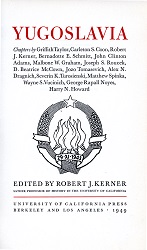
The age-long tragedy of the Slavic race — the division of the Slavic peoples caused by the fact that some had been drawn into the orbit of Western, Latin, Roman Catholic civilization, whereas others derived their culture Byzantine, Orthodox sources — was nowhere more keenly felt than in Yugoslavia. This country affords the clearest example of the divisive effects of cultural schism: the Serbians are culturally and religiously Eastern Orthodox; the Croatians and the Slovenes are staunchly Roman Catholic. With the political unification of the Serbs, the Croatians, and the Slovenes, which was formally proclaimed on December 1,1918, the formidable task of making a homogeneous nation from these diverse elements, divided by a millennium of separate historical development, was matched by the no less necessary task of adjusting the diversities of their ecclesiastical organizations. For ecclesiastical disunity threatened to prove a serious obstacle to national unity.
More...
For centuries the territory of the South Slavs was a scene of conflict between the East and the West. Long and bitter religious disputes raged, with the Bogomils, the Eastern Orthodox, and the Roman Catholics struggling for dominance. the Ottoman Turks succeeded in conquering the entire Balkans by the end of the fifteenth century, the process of Islamization gradually extended over a large part of the Yugoslav lands. The Ottomans did not, for the most part, impose their faith on the newly conquered peoples, with the exception of boys taken into the janizaty and spahi corps. The Orthodox and Catholic churches suffered almost no hindrance in the exercise of their beliefs. But members of the Moslem faith were preferred for government positions and were given other favors by the government. As a result, many Yugoslavs went over to Islam. The nobility accepted Islam in order to preserve their privileged social position and wealth, to protect themselves from Turkish and Albanian attacks, and to escape the blood tax.
More...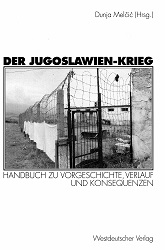
19.1. The political imaginary of Croatian national history 19.2. On the history of Bosniak mythology 19.3. The Sarajevo Paradoxon
More...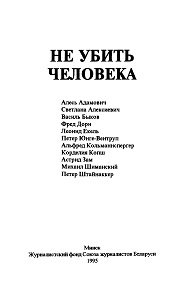

All his life Ales Adamowitsch thought about and never tired of writing that the most important and fundamental idea at the end of the 20th century was: Why does one person kill another person? His novellas, essays and literary journalism spoke of this. In this article, which we present to the reader and in which he analyzes the novels “Breast Sign 'Ost” and “The Dam” by the well-known Russian writer Vitaly Sjomin, he repeatedly returns to his constant theme: How can thoughts of murder as such be erased from human mind?
More...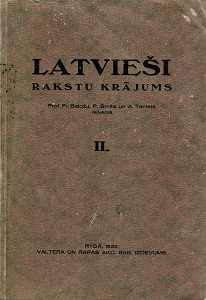

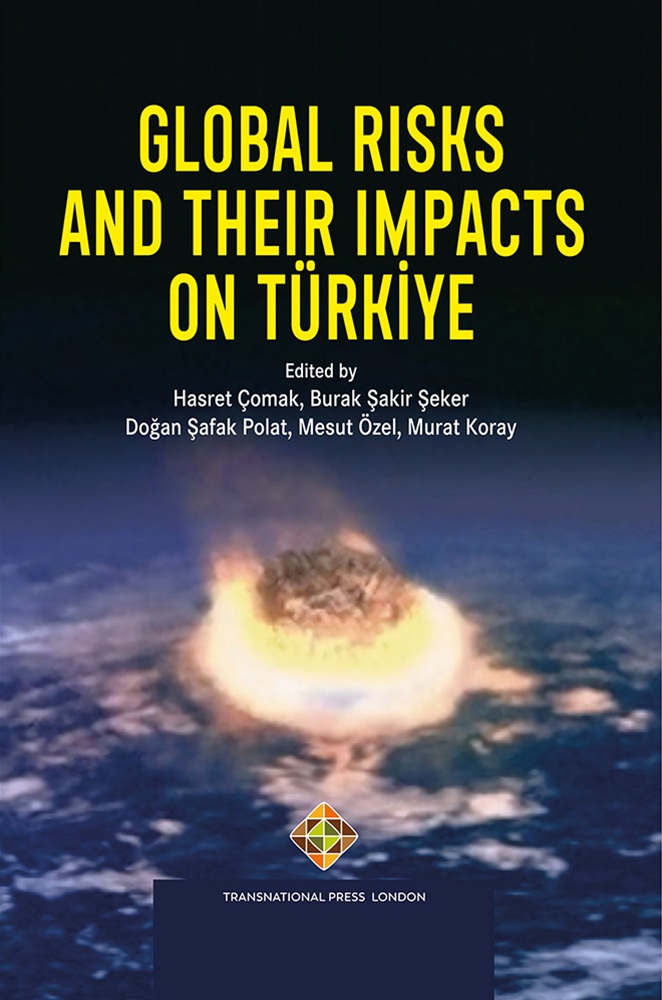
Technological advancements have brought about notable improvements in societies, yet they also pose certain risks. The era of artificial intelligence (AI) represents a profound technological evolution, with an ever-growing array of AI tools profoundly shaping the field of communication. Digital media platforms, driven by AI algorithms and machine learning, play a pivotal role in directing individuals’ digital communication. Amongst various demographic groups, Gen Z in Turkey emerges as a key cohort most profoundly affected by the age of artificial intelligence, poised to influence this era significantly through the technology they produce.
More...
Tattoos have always been a way for people to express themselves, and gang tattoos are no exception. Members of certain criminal gangs and mafias, both inside and outside of prison, are notorious for having tattoos with meanings related to them. They often contain symbols that are complex and carefully designed, whether they represent their lifestyle, what they have done, or their rank within a particular gang. Based on this fact, in this paper we will try to point out some important characteristics of tattoos as inevitable features of the informal prison system.
More...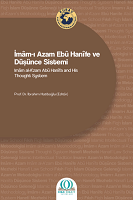
Saygıdeğer misafirlerimiz, mazeretimi arz edeyim; hadis öğretim üyemiz Akif Köten hocamızın kardeşi vefat etmiştir, onun cenaze merasimine katılmamız gerekiyor. Onun için sayın başkan ve katılımcılara teşekkür ederek sözlerime başlamak istiyorum.
More...